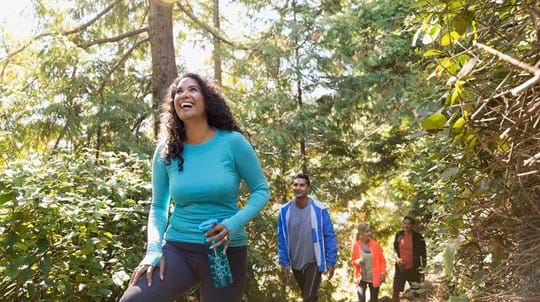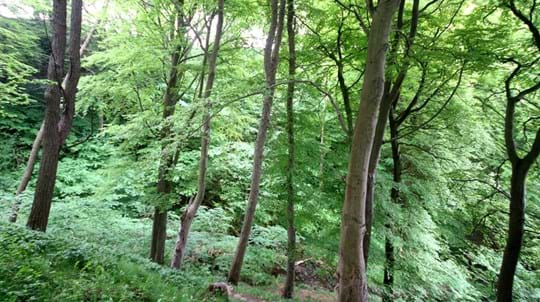
Cleatop Wood
South of Settle

Woodland Trust wood
12.80 ha (31.63 acres)
SD816612
Explorer 41
OS Landranger 98
Located to the southwest of Settle in the Yorkshire Dales, Cleatop Wood is a breathtaking place with superb mature trees, a multitude of birds and wildflowers, and commanding views over the rolling countryside.
This beautiful site has excellent walks and is an area of particular archaeological importance. It has native woodland planting and an existing ancient woodland called Stubbing Wood that is dotted with wildflowers.
Features
- Grassland
- Broadleaved woodland
How to get to Cleatop Wood
Cleatop Wood is located approximately two kilometres to the southwest of Settle in the Yorkshire Dales.
From the M1 (heading towards Leeds) take junction 42 towards Manchester (M62). At junction 27 merge onto Gelderd Road towards Batley and turn left onto Wakefield Road. Continue on this road, which becomes Canal Road until you get to Shipley. Turn left onto Otley Road and then right onto Bradford Road. When you reach a roundabout take the second exit onto Sir Fred Hoyle Way. Continue straight and carry on past Keighley, taking the second exit on the roundabout onto the A629. Continue on, past Skipton, Gargrave, Hellifield and Cleatop. Take the second exit into Settle.
The nearest train station is located in Settle.
Visit National Rail for more information.
The nearest bus stop is either to the north on the road into Settle, or to the south close to the hamlet of Mearbeck. You can get to the woodland via 1km of unsurfaced farmland. It is not recommended that you walk along the A65 as it is busy and doesn't have a footpath.
Visit Traveline for more information.
Starting from the junction of Lower Greenfoot turn right onto Ingfield Lane. From here you will see that the road curves to the right and that there is a gravelled lane to the left. Follow this lane until you come to a junction (what3words location ///spelled.increased.yarn). Climb over the stile opposite and continue across three fields, heading towards the wood in the distance. The final stile will lead you to a sign welcoming you to Cleatop Wood.
There are two public footpaths, one of which follows the western boundary or the woodland and one following the eastern boundary. The two paths are linked to the south of Stubbing Wood.
Facilities and access
There is open access across the entire site. All the paths within the woodland are unsurfaced and grassy underfoot, generally on gentle to moderate slopes with occasional steep sections which give great views out across the surrounding countryside.
No parking is available on or near the site. There is, however, there is Whitefriars car park in Settle.
Public toilets are available at Whitefriars car park in Settle, at what3words location ///available.juggled.stood.
Wildlife and habitats
Cleatop Wood is a mixture of newly established native woodland and ancient semi-natural woodland running along a stream to the south.
Animals
Look out for roe deer and the flash of white markings as they run.
Trees, plants and fungi
The ancient part of Cleatop Wood (called Stubbing Wood) has attractive patches of bluebells, wild garlic, dog's mercury and primrose in spring. As you walk through the site look out for oak, ash, alder, silver birch and rowan that make up the canopy, and the hazel, holly and hawthorn in the shrub layer. These species reflect and extend those found in surrounding woodlands.
Habitats
Cleatop Wood consists of 12 hectares (30 acres) of new native broadleaved woodland, surrounding approximately one hectare of mature semi-natural ancient oak woodland which is situated on top of a prominent grit stone outcrop almost central to the entire site.
About Cleatop Wood
Cleatop Wood was planted in 2003 partly by local schoolchildren through our Trees for All project.
The woodland is enclosed on all sides by old drystone walls and the whole area is of particular archaeological importance with possible links to the Bronze Age, including a circular mound that may
be a burial cairn. The archaeology is left largely undisturbed within the large areas of open space, especially to the southeast.
In 1612, much of the site was woodland and the area was known as South Park – an enclosure of woody ground. In 1759 woodland to the north of Stubbing Wood was cleared for horse pasture. By 1844 Stubbing Wood had been reduced to what it is today and what is now Cleatop Park Wood was planted. The lack of cultivation during this time meant that archaeology was preserved.
Look out for the ridge and furrow to the west, and the hollow way, formed from gritstone extraction, that passes through Stubbing Wood.

Credit: Adrian Ashworth / WTML
Stubbing Wood has a number of small limestone boulders called glacial ‘erratics’ that were deposited during the last ice age, about 20,000 years ago.
Things to do in Cleatop Wood
Take a stroll along the unsurfaced grassy paths that are generally on gentle to moderate slopes. The occasional steep section rewards those that give them a go with great views out across the surrounding countryside. Take care in winter when the ground can be slippy underfoot.

Visiting woods
Walking dogs in our woods
Dogs are welcome for walkies in our woods. Take a look at our tips and guidelines for ensuring we keep our woods safe and special for dogs and wildlife.

Visiting woods
Walking
Taking a walk in the woods is the easiest way to enjoy the outdoors and get closer to nature.




















